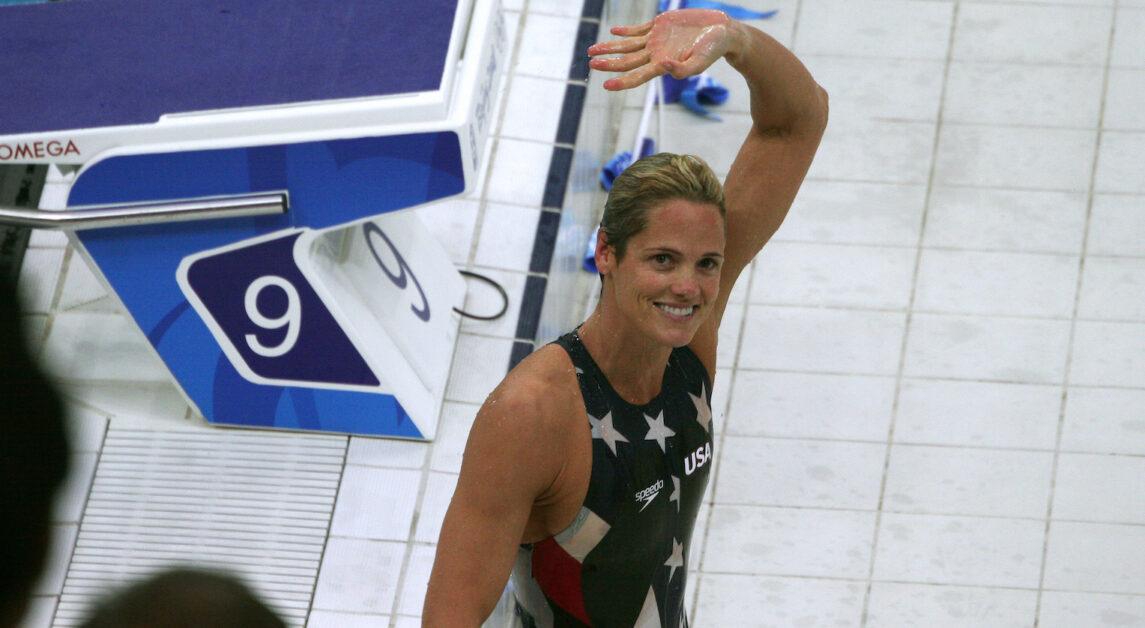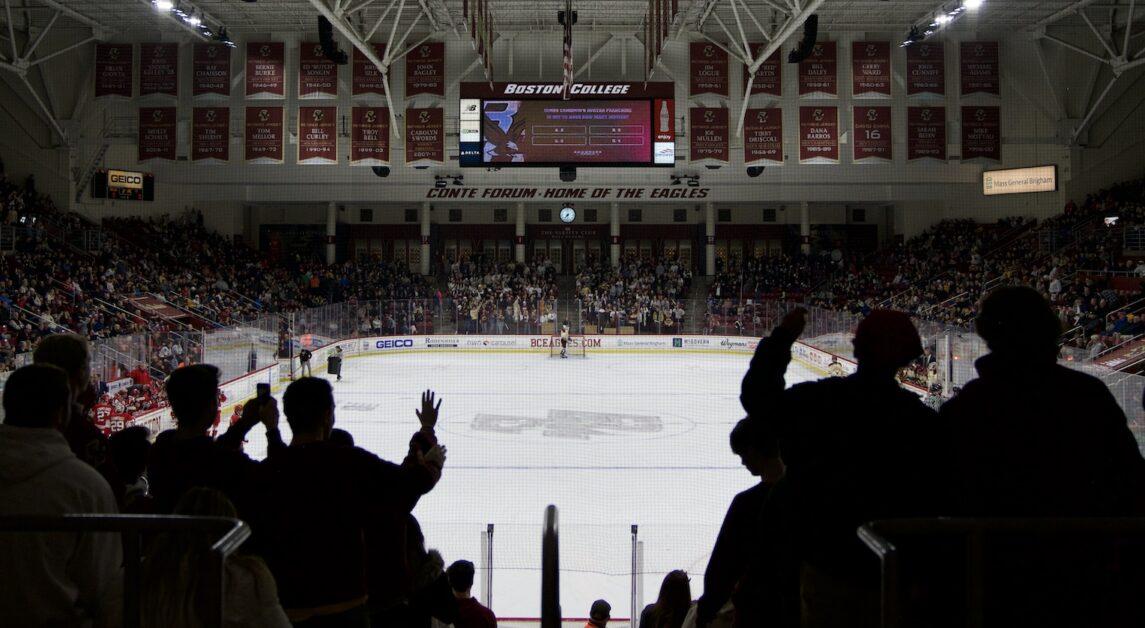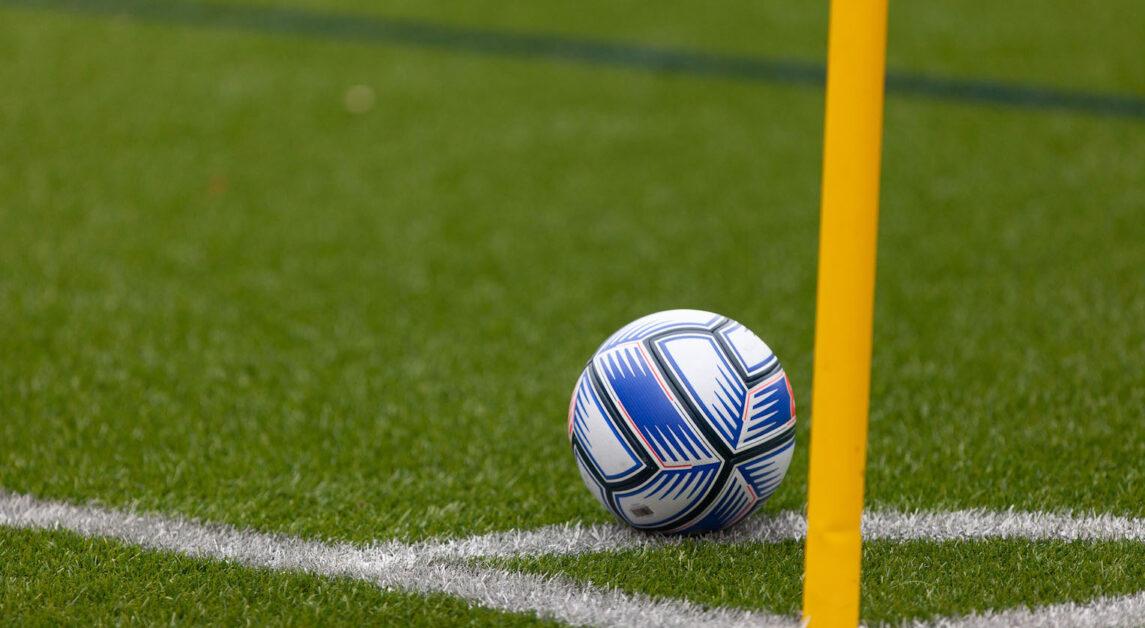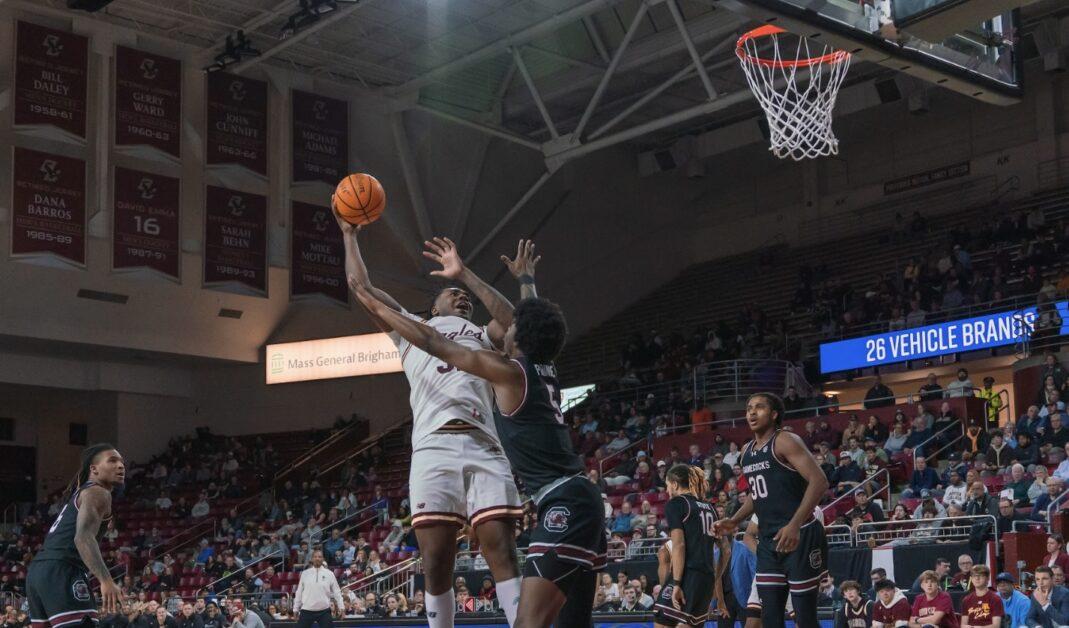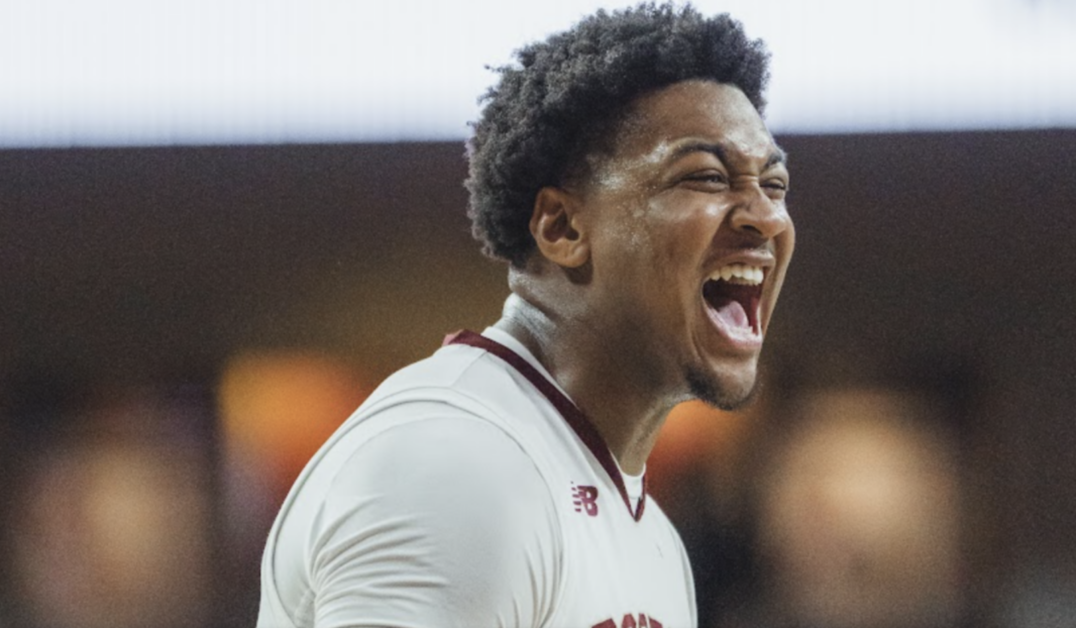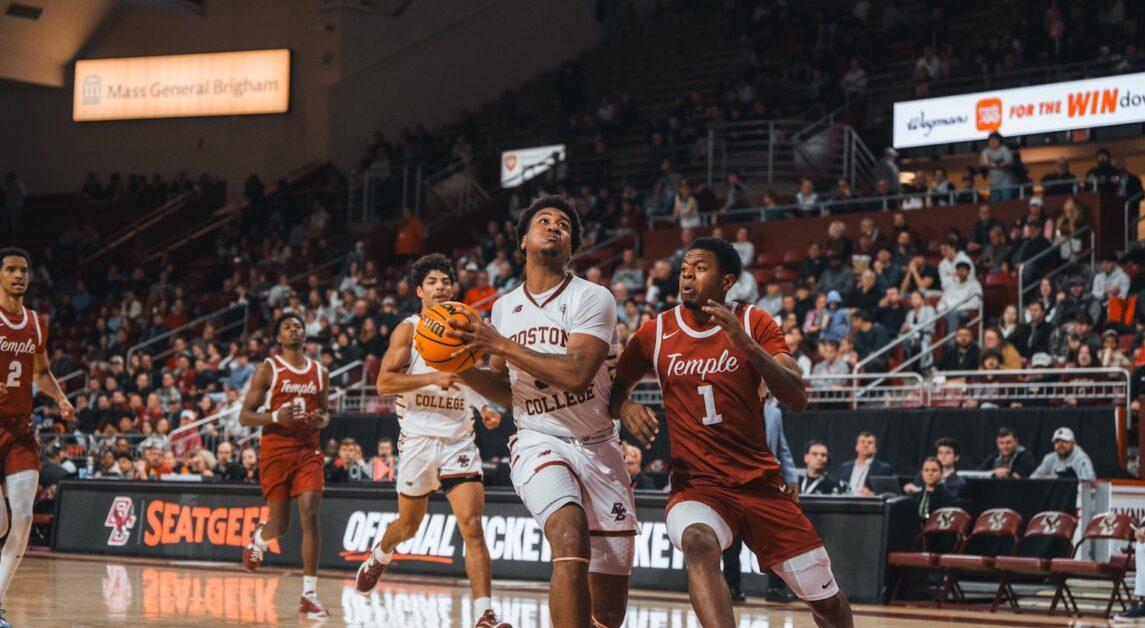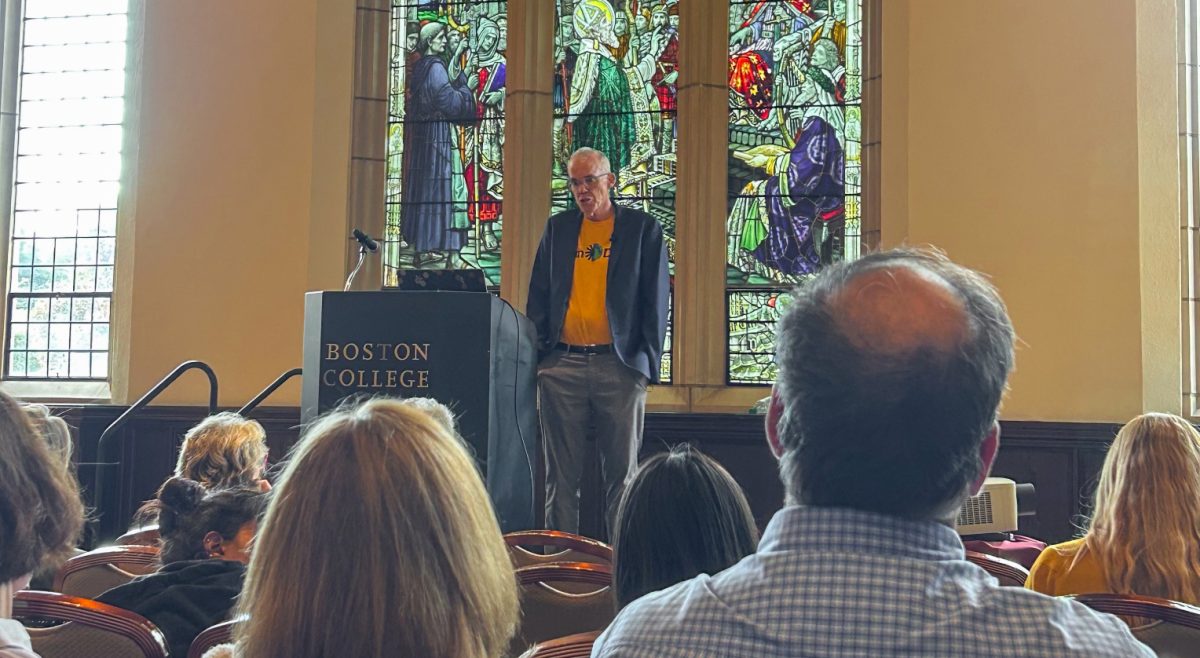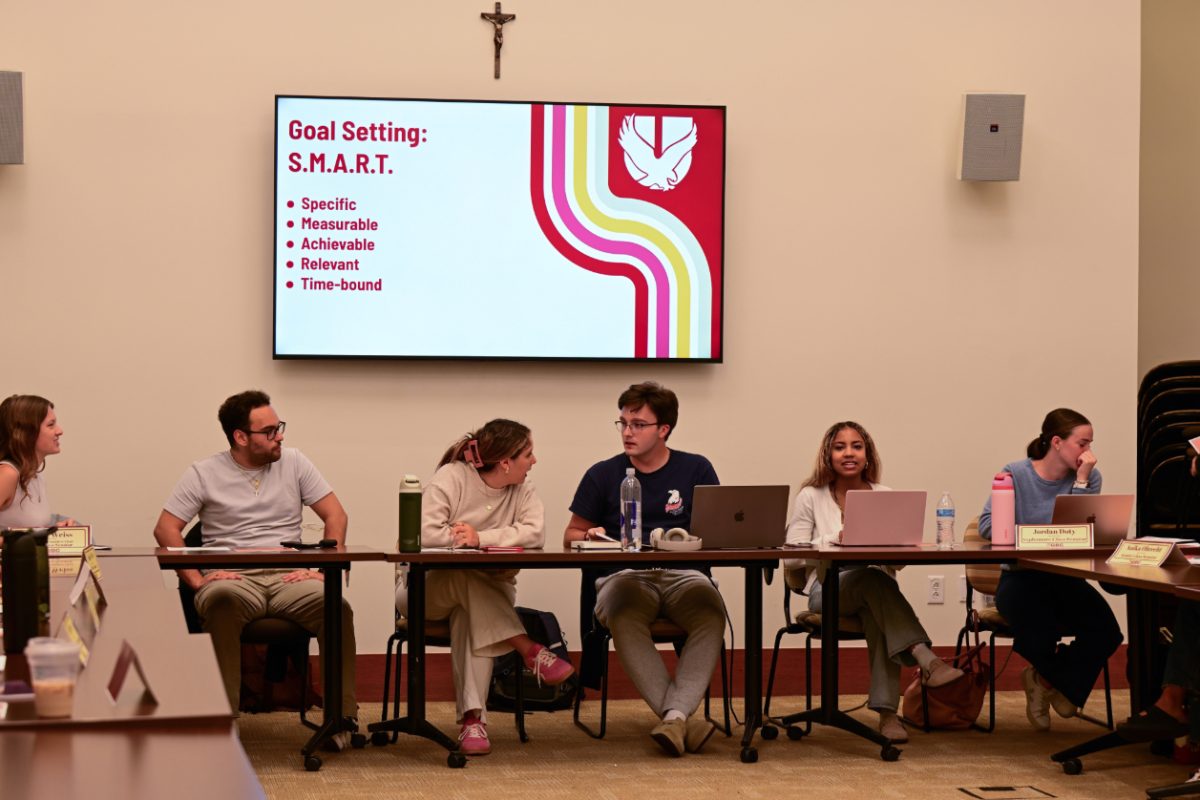On Sept. 28, Athletic Director Martin Jarmond announced a $150 million capital campaign solely centered around fundraising for Boston College Athletics. It is the largest athletics capital campaign to be undertaken by an ACC school, and it is designed to better develop student athletes—both from an academic and athletic perspective—through a number of avenues while increasing engagement with fans and alumni.
Over the last 10 years, BC has gone on quite the spending spree: the Light the World capital campaign generated $1.605 billion for the entire University, new athletics buildings have required $200 million in investments, and $300 million is being put into the Schiller Institute for Integrated Science and Society. Thats’s $2.225 billion of raised funds between the actual amount raised since Light the World launched in 2008 and the current projections for future fundraising.
This time, though, the funds are going to something BC has never specifically fundraised for in the style of a capital campaign. Wesley Ellison-Stewart, senior associate athletic director and director of development for athletics, said that 2018 is the right time for such an initiative to get started.
“When [Jarmond] joined as athletic director in June of 2017, one of the first things he evaluated was that we didn’t have a strategic plan,” Ellison-Stewart said. “We really had never looked at where do we want to be five years from now, 10 years from now to fulfill a vision. And so over the last year, he recruited and built out his leadership team and looked at … strategic priorities that [he wanted] to address.”
That led Jarmond to realize significant financial resources were required to execute his vision, according to Ellison-Stewart. Since Light the World ended so recently, a University-wide campaign didn’t make sense to administrators, according to Ellison-Stewart, but bringing the entire institution’s weight behind athletics was a better option at this time.
Ellison-Stewart indicated that this capital campaign means the University’s full fundraising apparatus will be thrown behind it’s athletics program. Although fundraising for academics will always come first, this is the first athletics centered campaign.
In the athletics department’s opinion, that means putting together top-25 level teams throughout the entire program, according to Ellison-Stewart. In order to do that, football and men’s basketball will be a priority, given the trickle down effects of the big-money college sports on the other sports in college programs across the country, Jarmond and Co. will place the required emphasis on those two sports.
Every BC fundraiser will be concentrating on raising funds for athletics—Ellison-Stewart was brought to the University specifically to head up a team within development to concentrate on this very project. Greater Heights features three pillars: competitive excellence, the capital campaign, and athlete formation.
To improve competitive excellence, Ellison-Stewart said that growing the annual operating budget to incrementally improve BC’s capabilities in regards to recruiting. There are three funds that can be donated to within the daily operating expenses: the Excellence Fund, the Flynn Fund, and sport specific support.
The Excellence Fund provides support to football, men’s basketball, and men’s ice hockey programs—here is where specific funds often aid recruiting measures, which can cover essentially any category of expense but has to be geared toward enticing high-level athletes. The Flynn Fund is directed toward travel, equipment, and apparel expenses. Sport specific donations can be earmarked by donors for any of the 31 sports programs BC offers.
The capital campaign will be the largest component of the entire initiative, providing funds that can go to major facilities upgrades. Conte Forum and the Harrington Athletics Village require further upgrades and construction, and the Greater Heights website notes that Olympic sports require major facilities renovations in order to bring those programs up to the level the most competitive institutions in the country set.
The final pillar is student formation, which Ellison-Stewart noted required further aligning the athletics program with the Jesuit values the University holds dear. There are multiple questions Ellison-Stewart noted athletics is trying to keep on top of in this area.
“How are we investing in [students] health and wellness programming?” she said. “How are we investing their academic success and making sure that when they do get to BC that they are able to succeed and pursue whatever major they’re passionate about? And then, how are we supporting their transition upon graduation into the other real world?”
Ellison-Stewart stressed that athletics brings the institution together. She credited Doug Flutie’s influence on the college helped solidify BC as a residential campus rather than a commuter one. When donors participate in initiatives such as this one, Ellison-Stewart believes that they’re following in those footsteps to launch BC into a more successful long-term athletic program, finishing the job Flutie, Jared Dudley, Matt Ryan, and others have started on the field.
Across the country, such university-wide campaigns are rare. Among BC’s peer institutions, none have run any operation quite like this one. Holy Cross committed to allocating $85 million of its current $400 million capital campaign to athletics. Notre Dame ran a $1.5 billion campaign that ended two years ago, and allocated $84 million to athletics within it. Georgetown put together a $1.67 billion capital campaign with $62 million earmarked for an athletics facility.
The SEC is the conference that has put together more athletics specific campaigns. Alabama has committed to raising $600 million over 10 years—a remarkable number in that it’s twice as much money raised per year as BC, the program with the largest capital campaign in ACC history, is raising. Auburn has put together an incentive-based capital campaign to raise $61.7 million—despite it being a powerhouse, it isn’t searching for nearly as far reaching a campaign as BC has decided to.
The Big 12 has put together similar, academic based campaigns to Light the World, but nothing like the athletics-focused Greater Heights. The Big 10 is the same way, with Michigan embarking on a $4 billion campaign with athletics serving as an aspect of it. Northwestern has gone the small scale fundraiser route, putting together $55 million to open an indoor fieldhouse.
The largest ACC campaign is in progress, but isn’t a capital campaign solely based around athletics. A whopping $371.8 million is being allocated for endowed scholarships for athletes, as well as new facilities and improvements to existing ones.
With all this in mind, it’s clear that BC is doing everything to get closer to the financial stratosphere that athletic powerhouses across America currently occupy. The University isn’t capable—yet—of setting an ambitious, single goal of $370 million, but as BC has broken its fundraising into a few different stages, its total expenses rival the NCAA’s most successful members.
If the University can fulfill Jarmond’s long-term goals on the field and in its coffers, it’s possible that a feedback loop—with more athletic success comes more donations, and with more donations greater success can be found on the field—could fuel a significant improvement in BC’s standing nationwide.
Charlie Power and Jack Miller contributed to this report.
Update (10/17/18, 7:20 p.m.): A previous version of this article included a quote from Ellison-Stewart saying that athletics was now the number one fundraising priority of the University. That sentiment is untrue, and the article has been updated with a paraphrased quote indicating how the University’s fundraising apparatus will be wholly behind Greater Heights, even though academic support will always come first.
Featured Graphic by Anna Tierney / Grpahics Editor



